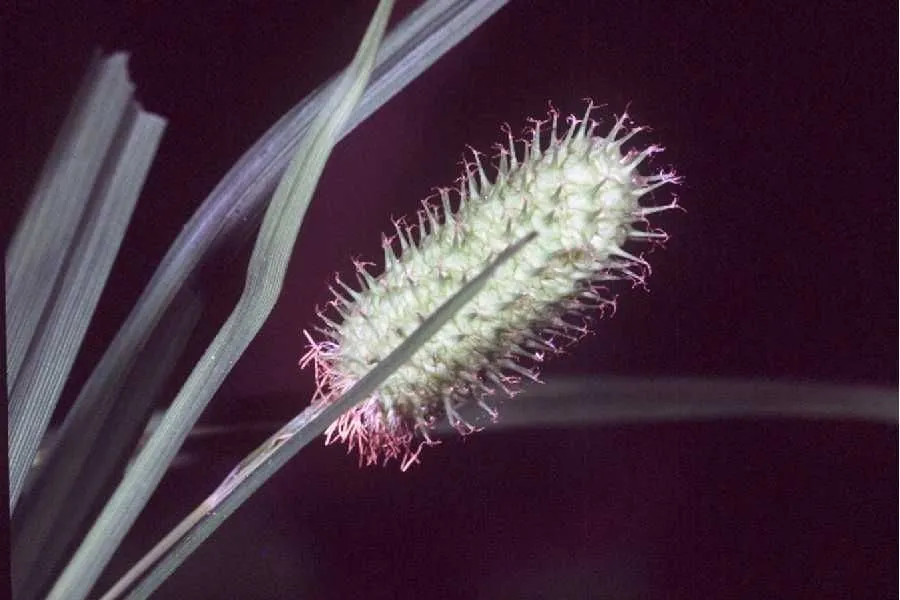
Author: Michx.
Bibliography: Fl. Bor.-Amer. 2: 169 (1803)
Year: 1803
Status: accepted
Rank: species
Genus: Carex
Vegetable: Unknown
Observations: E. Canada to C. & E. U.S.A.
The Cattail sedge, scientifically known as Carex typhina, is a fascinating plant species belonging to the Cyperaceae family. Described by Michx. in his work “Flora Boreali-Americana” in 1803, this sedge has a significant presence across various regions in North America, specifically from Eastern Canada to Central and Eastern United States.
Cattail sedge thrives in a variety of wetland habitats. This resilient plant is often found in marshes, swamps, and along the edges of streams and ponds where it can frequently dominate the local vegetation due to its robust growth. The plant’s structure is characterized by dense clumps of narrow, grass-like leaves that exhibit a hint of the classic cattail’s cylindrical flower spikes, which is indeed where it gets its common name.
Ecologically, Carex typhina plays a crucial role in its habitat. It helps to stabilize soil with its extensive root system, reducing erosion, and provides essential cover and food for various wildlife species. The plant’s seeds are a food source for birds, and its dense foliage offers nesting material and shelter.
Cattail sedge not only adds to the biodiversity of wetland ecosystems but also has potential practical applications. Its sturdy rhizomes and fibers have been traditionally used by Indigenous peoples for making mats, baskets, and other useful items.
Understanding the distribution and ecology of Carex typhina is crucial for wetland conservation efforts. Its presence in an area can be an indicator of soil health and water quality, making it a valuable species for environmental monitoring.
In conclusion, the Cattail sedge, or Carex typhina, is a vital component of North American wetland ecosystems. Its extensive range, significant ecological role, and potential uses make it a notable species worthy of both our study and preservation efforts.
Eng: cat-tail sedge, cattail sedge, common cattail sedge
Fra: carex massette
En: Cattail sedge, Cat-Tail Sedge, Common cattail sedge
Fr: Carex massette
Taken Jan 1, 1900 by EOL − USDA NRCS Wetland Science Institute. (public)
Taken Jul 8, 2005 by EOL − summerazure (cc-by-nc-sa)
Family: Myrtaceae Author: (F.Muell.) K.D.Hill & L.A.S.Johnson Bibliography: Telopea 6: 402 (1995) Year: 1995 Status:…
Family: Rubiaceae Author: Pierre ex A.Froehner Bibliography: Notizbl. Bot. Gart. Berlin-Dahlem 1: 237 (1897) Year:…
Family: Sapindaceae Author: Koidz. Bibliography: J. Coll. Sci. Imp. Univ. Tokyo 32(1): 38 (1911) Year:…
Family: Asteraceae Author: A.Gray Bibliography: Pacif. Railr. Rep.: 107 (1857) Year: 1857 Status: accepted Rank:…
Family: Fabaceae Author: Medik. Bibliography: Vorles. Churpfälz. Phys.-Ökon. Ges. 2: 398 (1787) Year: 1787 Status:…
Family: Aspleniaceae Author: (Cav.) Alston Bibliography: Bull. Misc. Inform. Kew 1932: 309 (1932) Year: 1932…